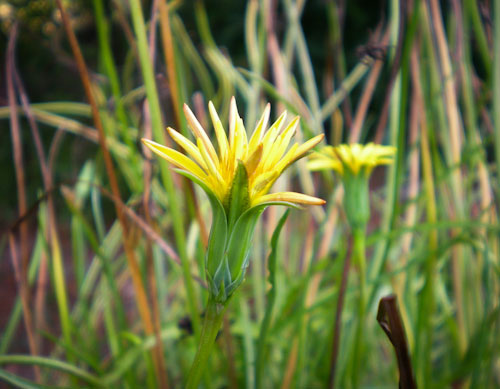
Murnong Daisy
|
Back to Factsheets | Download PDF |
Regeneration after fire
Early Europeans described Australia's bushland as almost parklike where bullock drays could be driven just about anywhere because of the lack of scrub growing under the towering gums. We now know that this wasn't by accident. Australia's indigenous inhabitants had been burning the bush and grasslands for tens of thousands of years. These fires were, in the main, lit to encourage the growth of food bearing plants and to revitalise areas of native grasses to entice grazing animals to. In our region, just some of the edible plants that respond to fire include:
Murrnong or yam daisy
Milkmaids
Bulbine lily
Early nancy
Chocolate lily
Greenhood orchid
Vanilla lily
Fringe lily
The regular burning of these areas encouraged food bearing plants (not to mention medicinal and fibre plants) and excluded other plants, especially members of the Myrtaceae family (gums, t tree, melaleuca) and Fabaceae family (wattles, peas). This "parklike" environment was created by indigenous Australians, it didn't just happen by chance. This is a thought that many early European settlers could not believe.
Within as little as 20 years after Europeans took over the land in Victoria, huge wildfire events began to occur. Due in part to the cessation of controlled burns by indigenous Australians, and the lack of fire knowledge on the part of the Europeans, different vegetation types began to assume control in many areas of Victoria. These vegetation types are what we experience today, fire loving eucalypts with a very thick understorey of fire loving shrubs.
The eucalypts are extremely specialised plants. They have evolved to such an extent that not only can they survive intense fire but they can actually cultivate a fire to suit their needs.
highly flammable oil content of leaves and twigs;
heavy litter fall (leaves, bark, twigs, and branches) in the drier months providing a ready supply of kindling;
open canopies of hanging foliage which encourage updraughts during fire;
two types of bark, both of which assist in the spreading of fires. The "ribbon" type bark hangs in the trees which will assist the fire upwards into the crown. The "stringybark" provides deep crevices for embers to grip to and stay lit;
as the trees burn the seed is dispersed from the hard woody capsules which have opened with the heat of the fire;
epicormic (beneath the bark) buds and lignotubers (suckering stems from the roots) enable the gums to grow new leaves and branches within weeks of the fire. A thick insulating bark assists these buds to survive the fires heat.
The understorey is just as tough and highly evolved with many fire tolerant tricks up its sleeve. But just consider one: the wattles, with their hard coated seeds sitting in the leaf litter just waiting for a fire to crack them open, a beginning of a whole new forest of millions of seedlings battling each other for that bit of sunshine before the gums fill up the canopy with new leaves and branches. Before they die from lack of sunlight, they will have laid down a whole new generation of seeds in the leaf litter waiting for the next fire to come.
The regeneration of the bush after fire is an amazing and complex topic. How our natural environment has changed since 1788 due to change in fire regimes is only now becoming apparent with new research and published data. If you are interested in delving deeper into this topic I would highly recommend the book "The Biggest Estate on Earth, how Aborigines made Australia" by Bill Gammage (A & U pub 2011).
|







